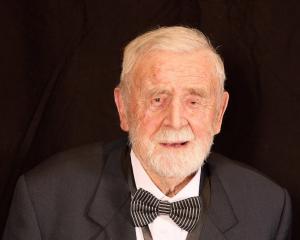
The University of Otago duo have been working with Joint Institute for Laboratory Astrophysics researcher Dr Christian Sanner and Massachusetts Institute of Technology researcher Prof Wolfgang Ketterle to independently observe Pauli blocking in ultracold gases of fermionic atoms.
Dr Deb said Pauli blocking occurred in ultracold gases because the constituent atoms filled nearly all available low-energy quantum states, which prevented atoms from making small transitions to neighbouring states.
This affected how light scattered from atoms in the gas, and all three teams observed Pauli blocking increasing the transparency of their gases as they were cooled.
The effect could someday be used to improve technologies based on ultracold atoms such as optical clocks and quantum repeaters.
The research project has been named one of the top 10 finalists in the Physics World magazine 2021 Breakthrough of the Year Award.
Other finalists include a project which is restoring speech in a paralysed man; observing a black hole’s magnetic field (Physics World 2019 Breakthrough winner); achieving coherent quantum control of nuclei; and confirming the muon’s theory-defying magnetism.
Dr Deb and Prof Kjaergaard said their selection as a finalist in the prestigious award was very exciting, but also very unexpected.
"We were a bit surprised," Prof Kjaergaard said.
"It is quite an exclusive list of people and it’s hard to get on it.
"It’s quite humbling."
He said Physics World magazine was one of the most-read magazines by physicists around the world and was supported by the Institute of Physics — a leading scientific society that works to advance physics for the benefit of all.
This year’s top 10 breakthroughs were selected from hundreds of research updates published by Physics World this year.
Selection criteria was also based on the significant advance in knowledge or understanding the project provided; and the importance of work for scientific progress and/or development of real-world applications.
The Breakthrough of the Year award winner will be announced next Tuesday, but Prof Kjaergaard said he did not have high hopes of winning.
"There’s so many great breakthrough projects.
"Just making the list is a win for us."












